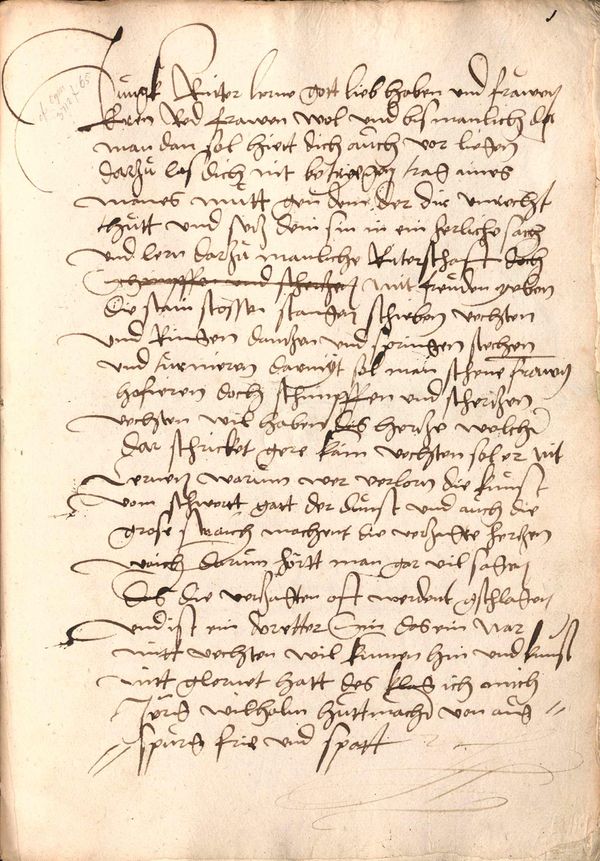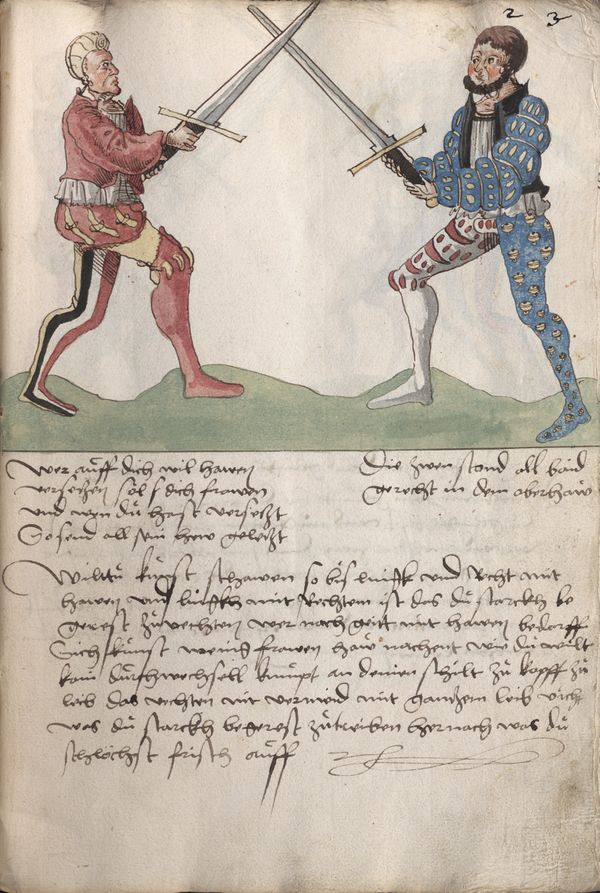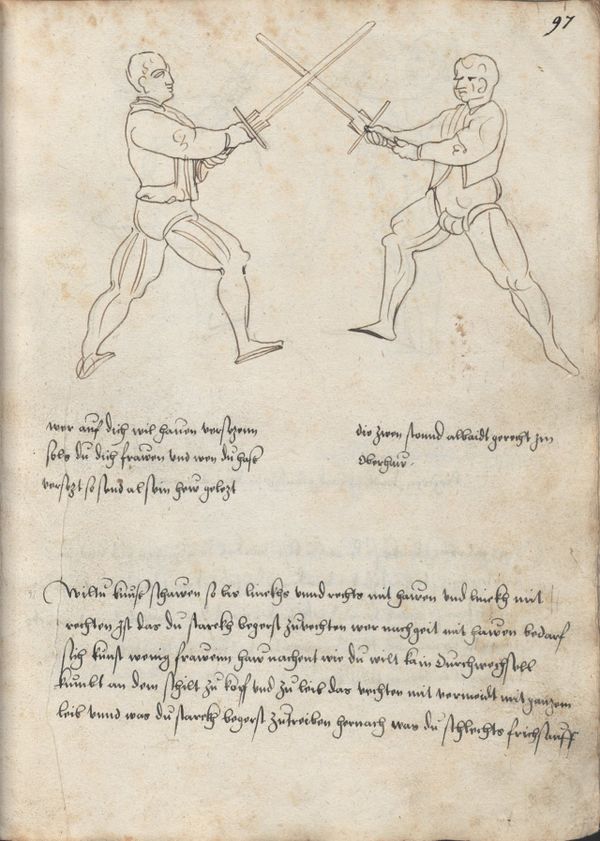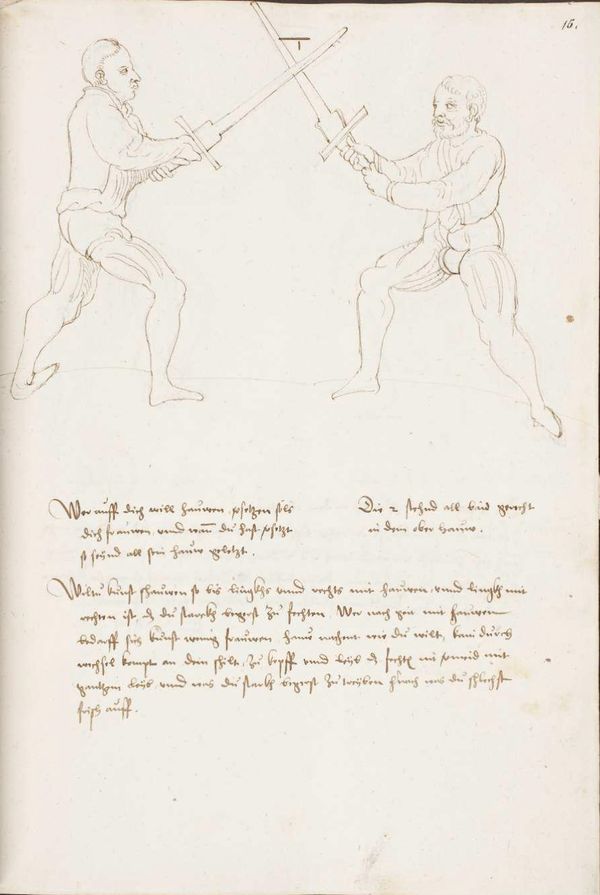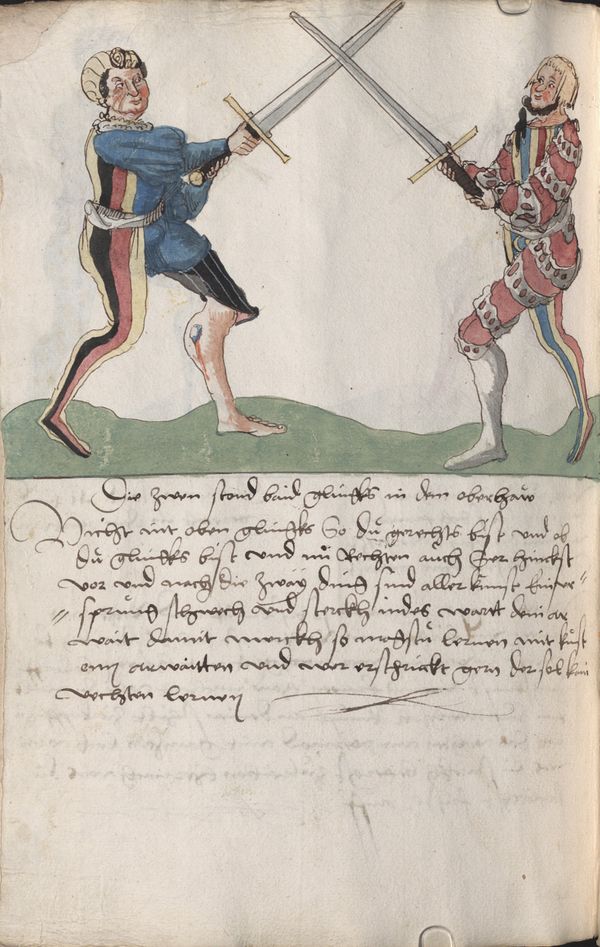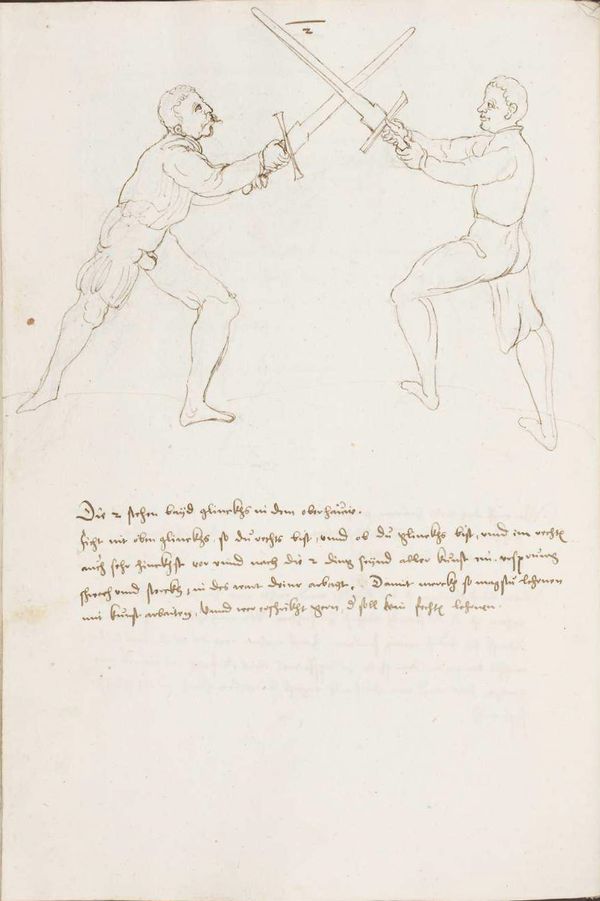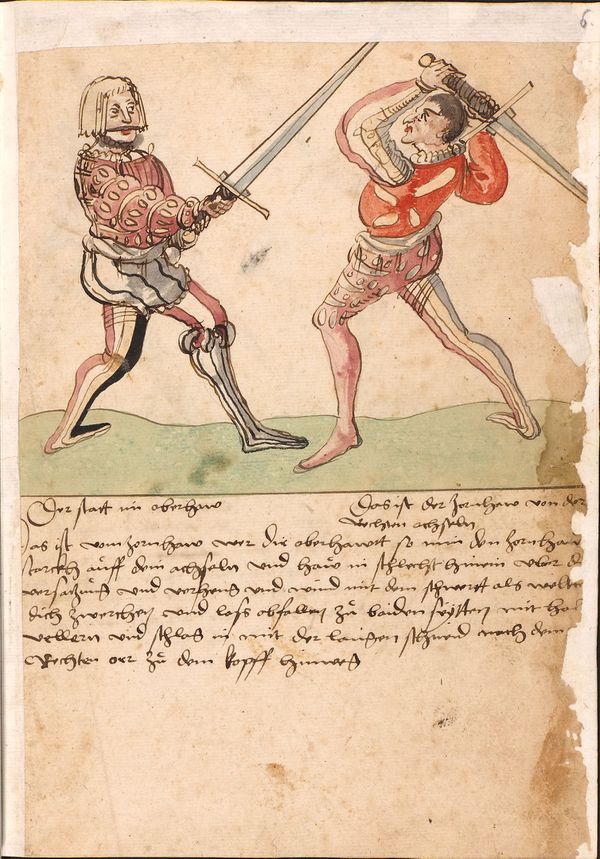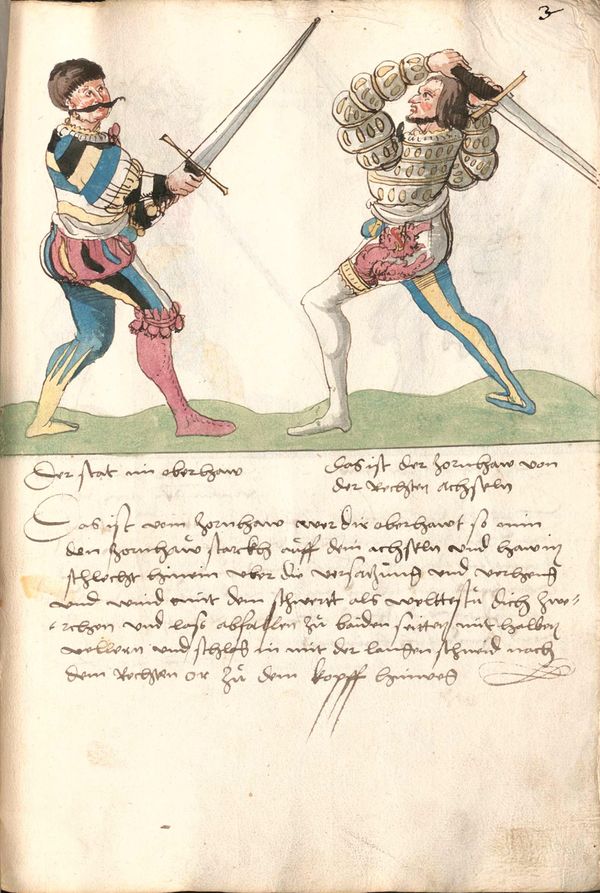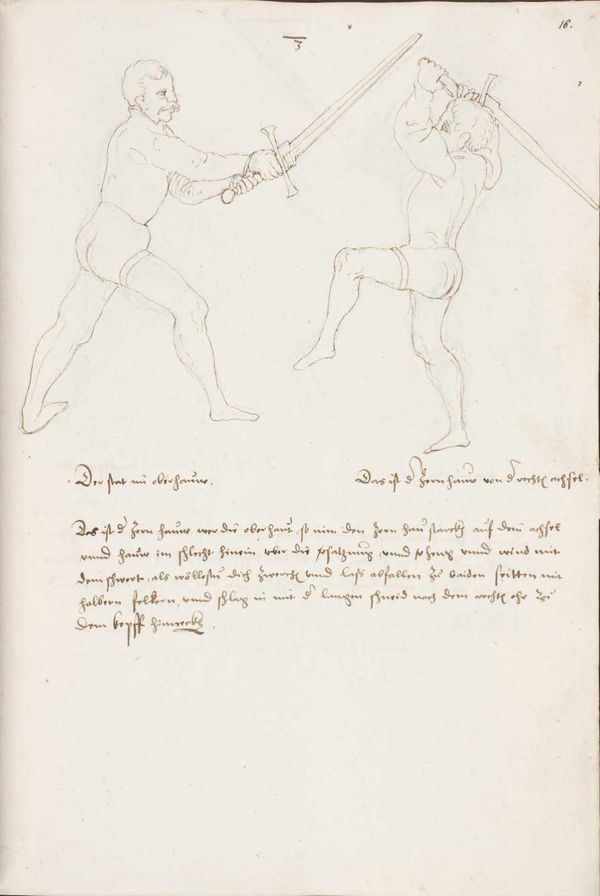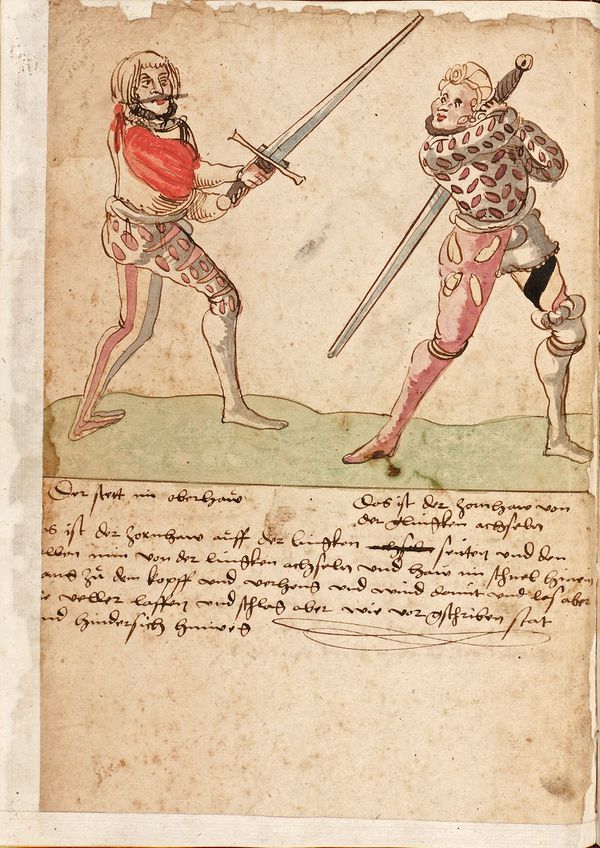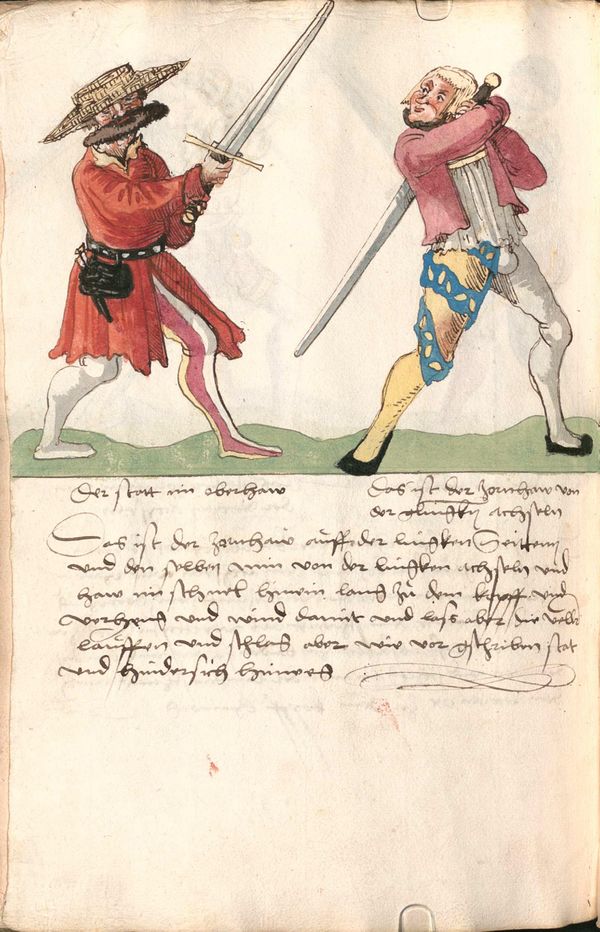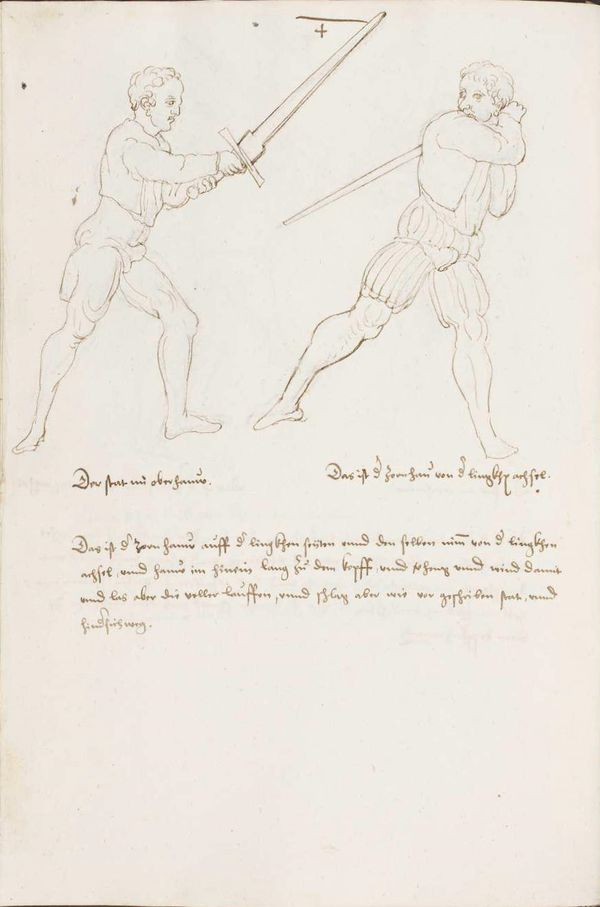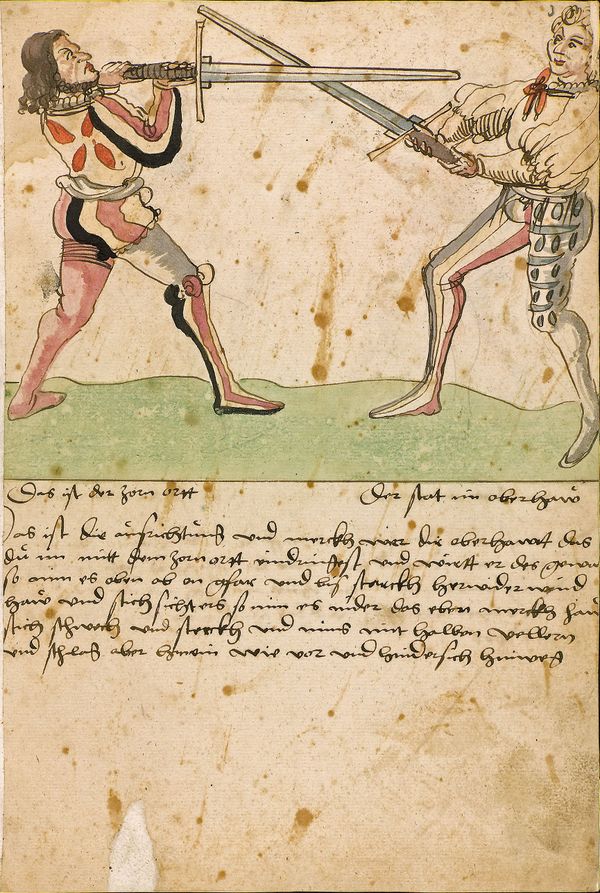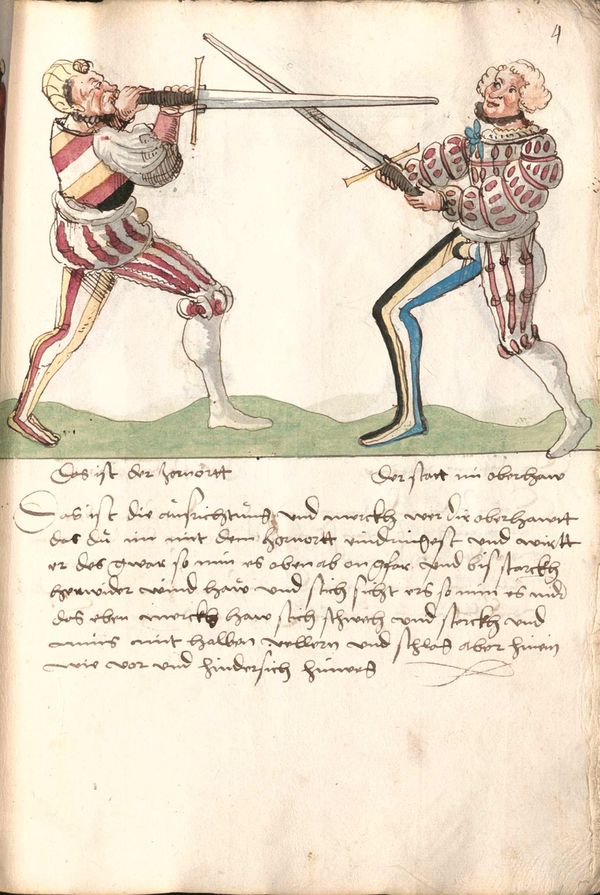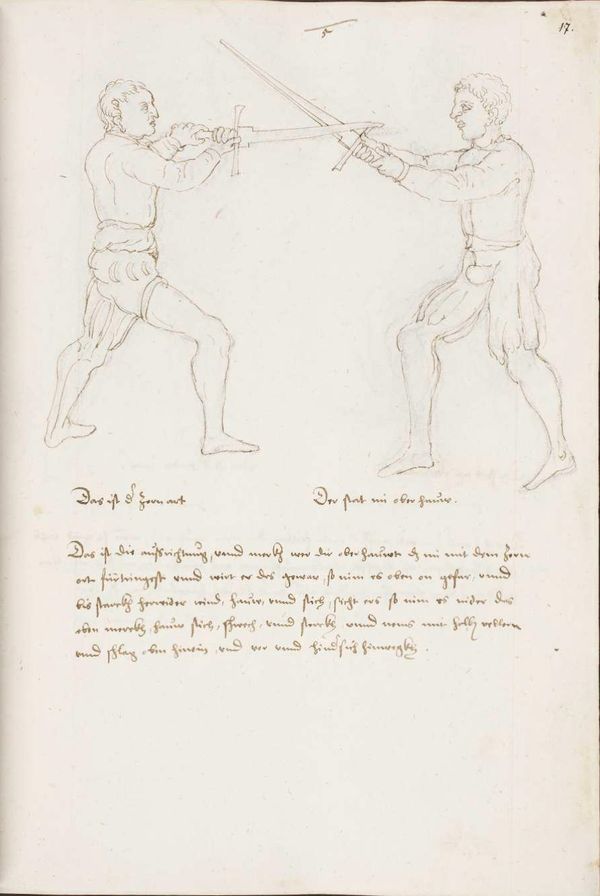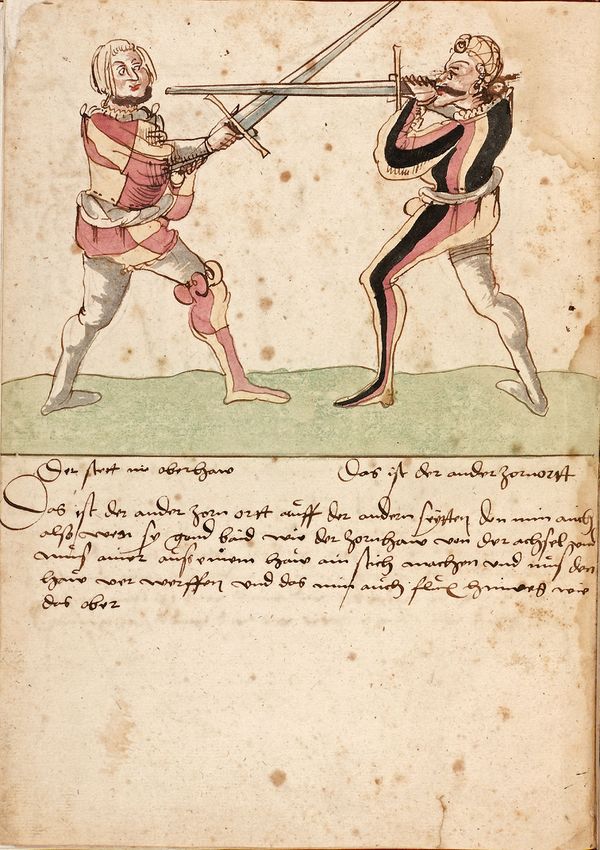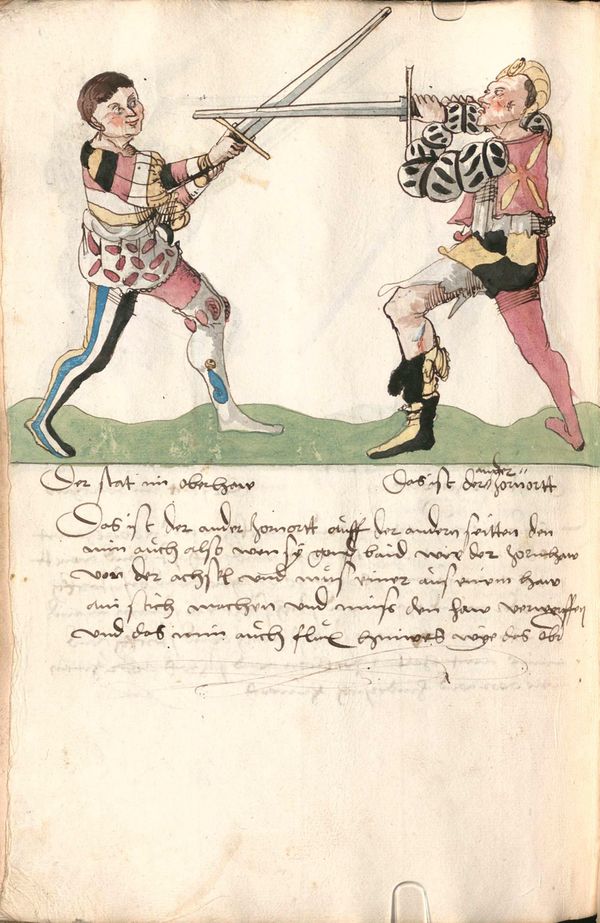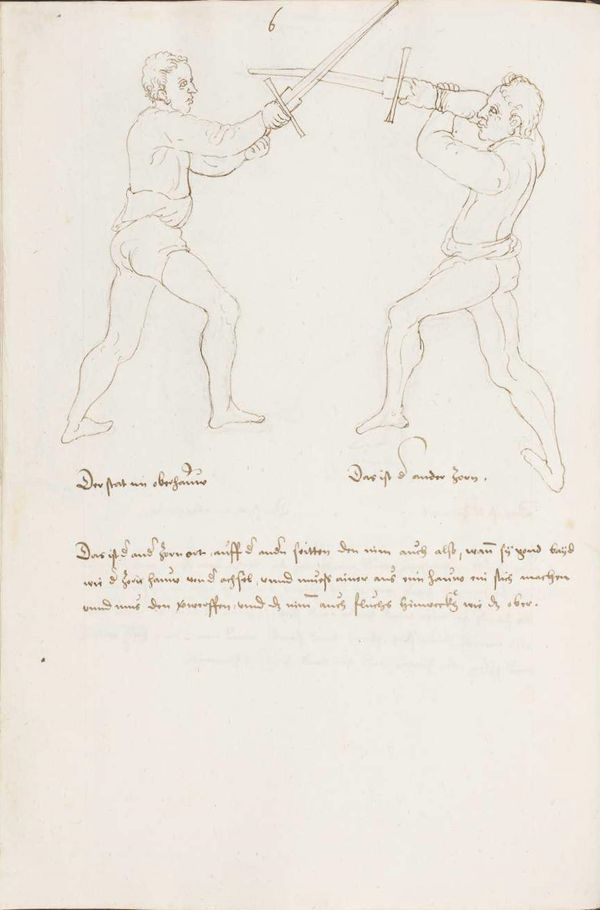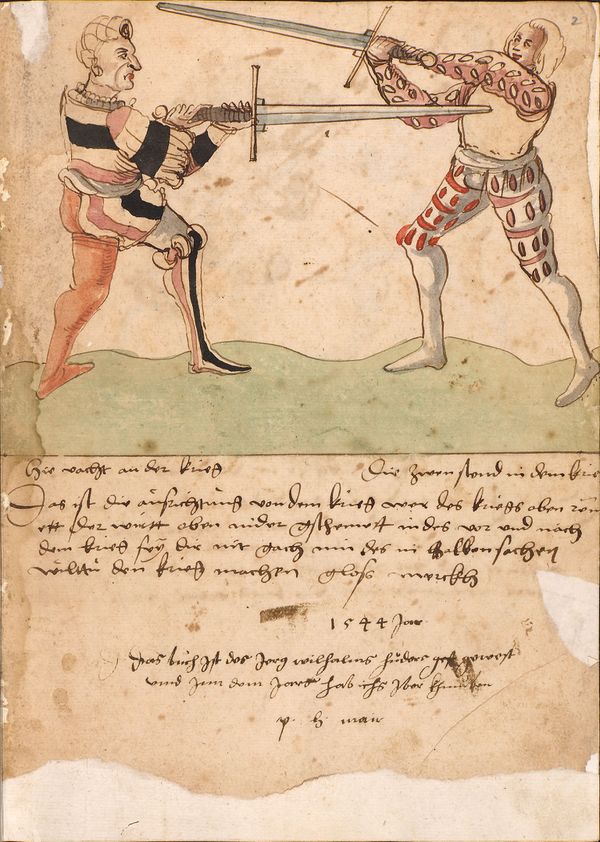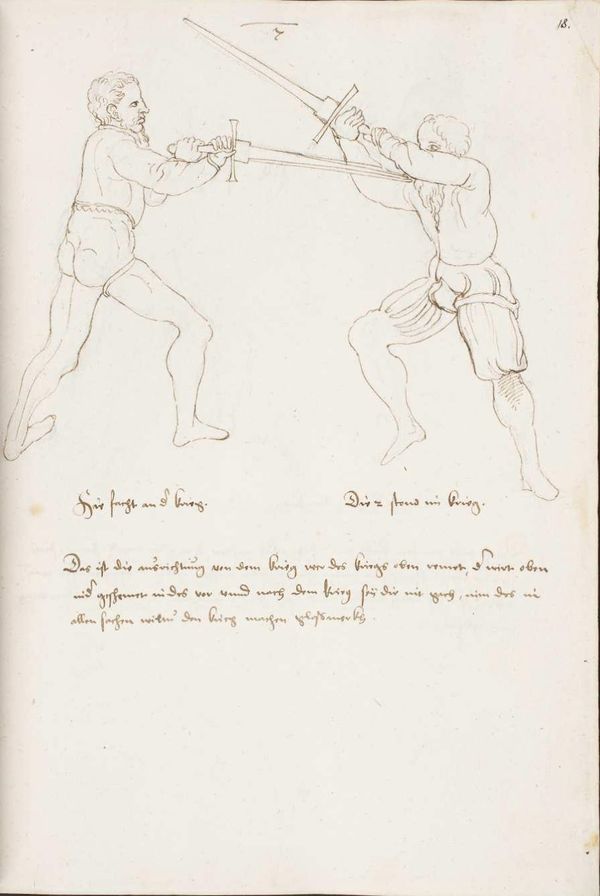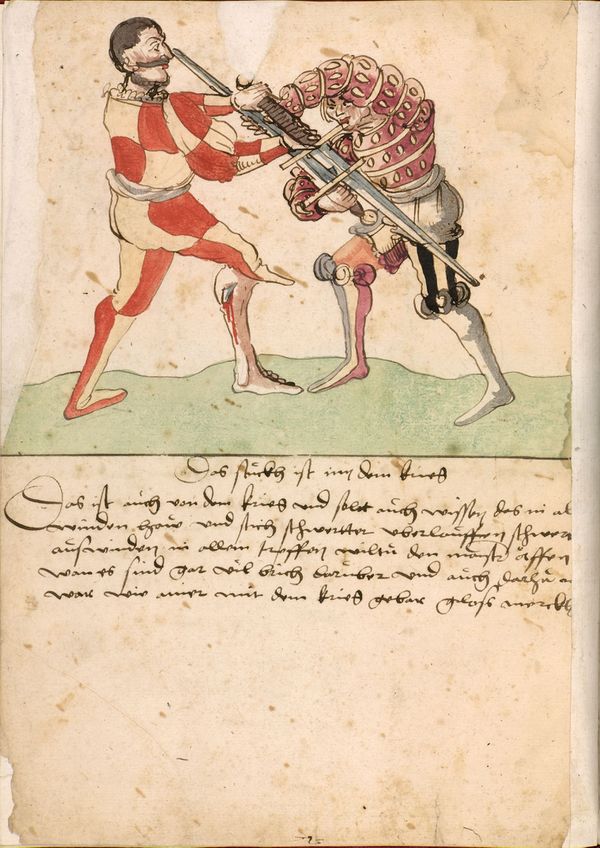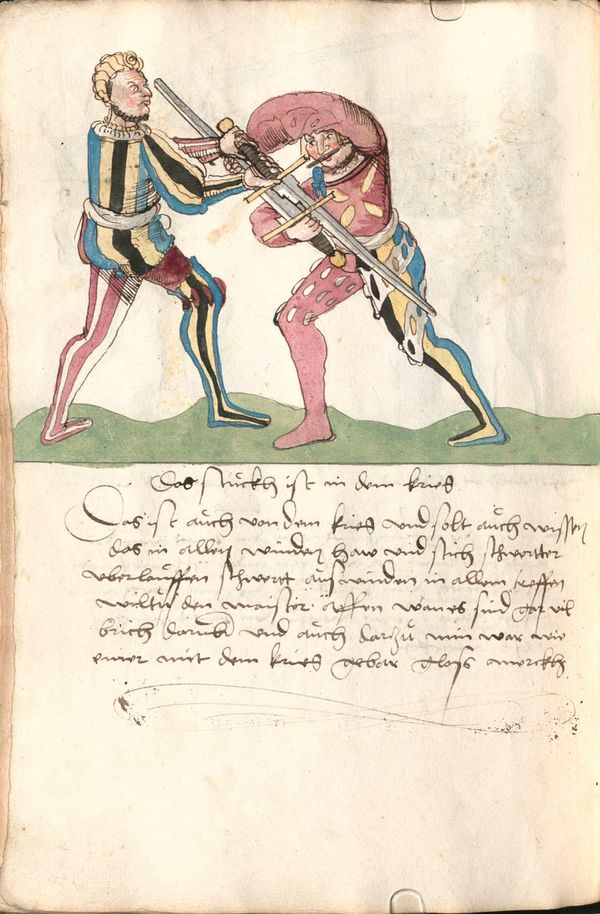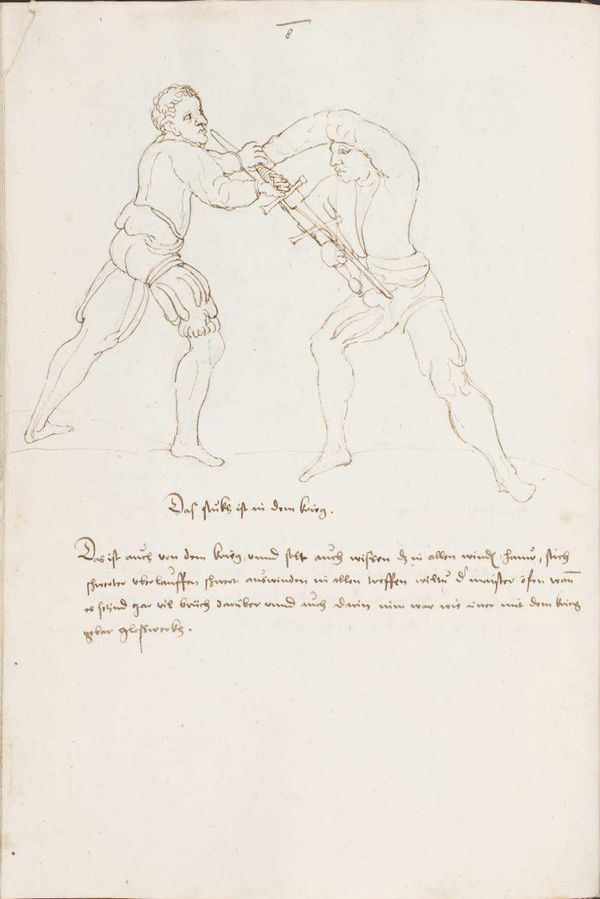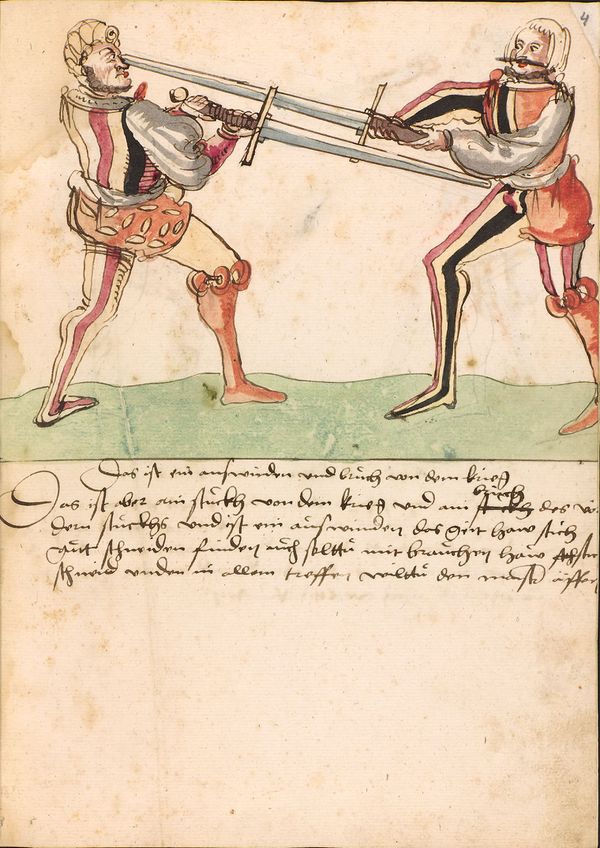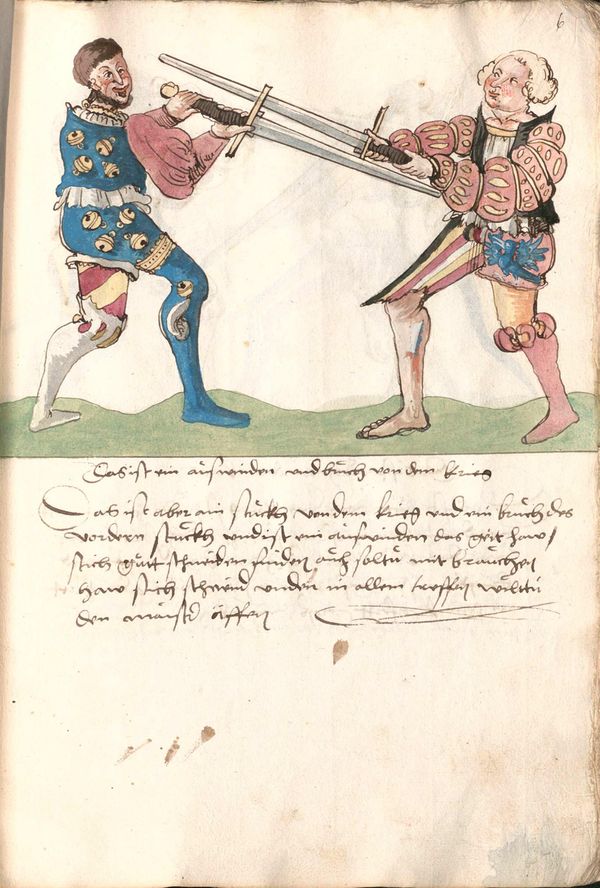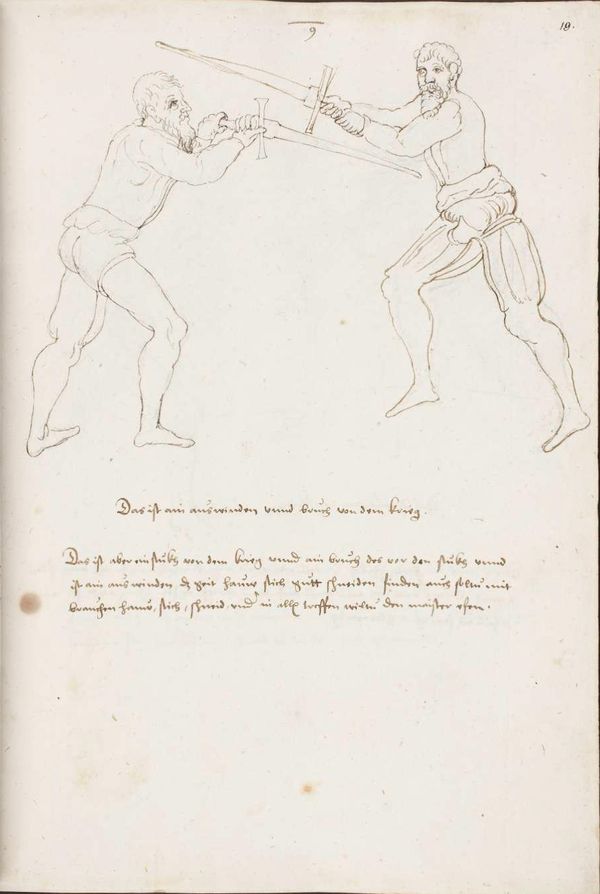|
|
You are not currently logged in. Are you accessing the unsecure (http) portal? Click here to switch to the secure portal. |
Jörg Wilhalm/Image comparison
Long Sword
Archetype (1523) [edit] |
Munich Version I (1523) [edit] |
Glasgow Version (1533) [edit] |
Munich Version II (1556) [edit] |
Wolfenbüttel Version I (1588) [edit] | |
|---|---|---|---|---|---|
[1] Young knight learn, to have love for god and honor women. Speak to women well and be valiant, so that one shall hear you and also be available thereto. Do not let yourself be deceived by one’s tricks, go with courage to he who does injustice to you, and set your sense to a sincere principle, and to this end learn valiant chivalry, yet practice pinching and jesting with joy. Throw the stones, shoving staves, fencing and wrestling, dancing and jumping, stabbing and jousting, with that should one seem to curry favor with women, yet fencing wants to have pinching and jesting. The heart which easily frightens there, no fencing shall he learn, why whoever loses the art from the sword, he goes hazy, and also makes large sweeps, those softly warped hearts, therefore one hears very many stories, that the hopeless often will be hit, and is a righteous sense that a truth with fencing will be reached and art has not learned. Of that complaint, I myself Jörg Wilhalm Hutter from Augspurg open and ridicule. |
|||||
[2] Whoever wants to hew upon you,
If you want to behold the art, hereafter what you strike crisply on. |
|||||
[3] The two both stand on the left in the over hew Don’t fence above on the left if you are right handed, |
|||||
[4] He stands in the over hew
This is about the wrath hew. Whoever hews you from above, take the wrath hew strong on your shoulder and hew in straight, over the parry, and hang and wind with the sword as if you want to thwart, and allow to drop to both sides with half failers and hit him with the long edge to the right ear to the head away. |
|||||
[5] He stands in the over hew
This is the wrath hew on the left side, and take the same from the left shoulder and hew him quickly in long to the head and hang and wind with it, and again use the failers, and hit yet again as stands written before and behind. |
|||||
[6] This is the wrath point
This is the direction, and note: whoever hews you from above, and take it with half failers, but hit in as before and behind. |
|||||
[7] He stands in the over hew
This is the other wrath point on the other side, take it also thusly: If they indeed both wrath hew from the shoulder, and one must make a stab from a hew, and the hew must be thrown, and take that also quickly away like the above. |
|||||
[8] Here, fences to the war
This is the direction about the war: Whoever’s war aims above, Gloss note. |
|||||
[9] This play is in the war This is also about the war, and should also know that in all windings, because there are very many breaks about them and also to them, realize how one bares with the war. Gloss note. |
|||||
[10] This is an outer winding and break from the war This is another play from the war and a break of the previous play, and is an outer winding that goes: hew or stab, find slices well. You shall also |

